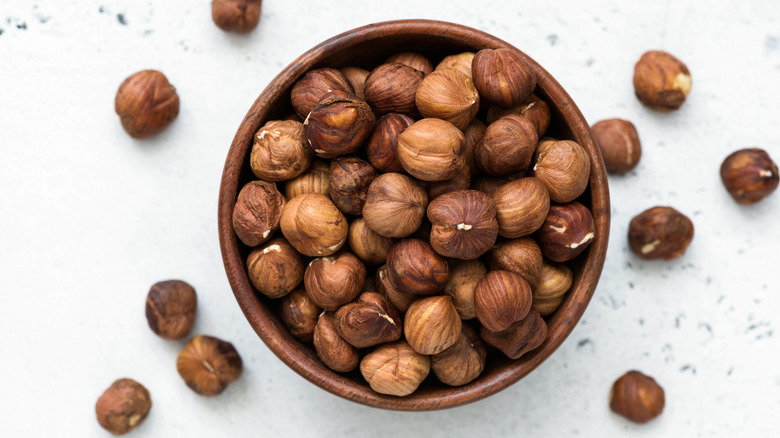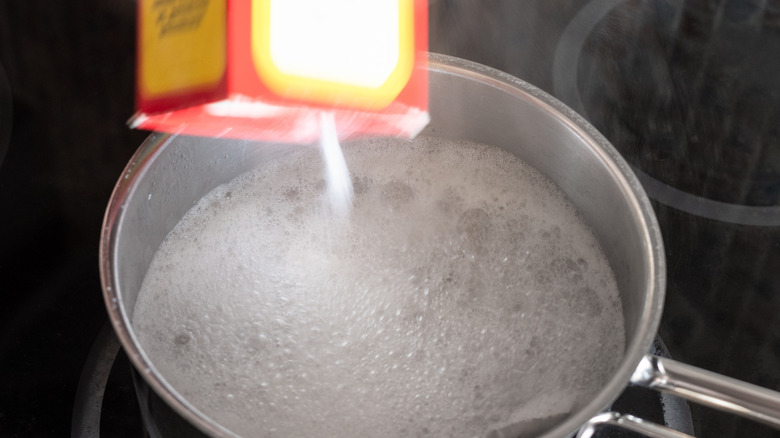Baking Soda Is The Secret Ingredient To Peeling Pesky Hazelnut Skin
Hazelnuts are one of the best nuts to keep on hand when cooking. Their buttery, slightly earthy flavor and subtly sweet scent makes them a stellar option for elevating both main courses, like this lamb with hazelnut gremolata, and desserts, like this dark chocolate hazelnut mud pie. The one drawback to working with hazelnuts in the kitchen, though, is how difficult they are to peel. Our favorite trick to slough off clingy hazelnut skins is by using baking soda, as its chemical properties minimize both the time and effort that otherwise doing so typically requires.
Baking soda is handy for skinning hazelnuts thanks to its high alkalinity. Alkaline ingredients are extremely effective when used to break down pectin, the naturally-occurring substance in many plants that gives them structure. This is also the case with hazelnuts, where baking soda breaks down the pectin found in the hazelnut's skin, causing it to loosen and making it easy to remove. The efficacy of this process is further increased when the baking soda is added to water, as the combination of the two results in an even more alkaline solution.
How to remove hazelnut skins with baking soda
Treating hazelnuts with a baking soda solution is similar to blanching other types of ingredients. Bring a pot of water to a boil and add 1 ½ tablespoons of baking soda for every 1 cup of water. Add your hazelnuts to the pot and let them sit for a few minutes. Next, transfer the nuts to a bowl of ice water to cool. Once completely cool, dry the hazelnuts and revel in how effortlessly the skins fall off!
With how easy it is to skin hazelnuts using this technique, you may be tempted to go ahead and make a large batch of peeled hazelnuts for future use. If you choose to do so, be sure to store them properly, as hazelnuts are prone to growing mold. Place your peeled hazelnuts in an airtight container in a cool, dry place like a pantry, or even in the freezer. They will last about three months before their flavor begins to noticeably decline.

